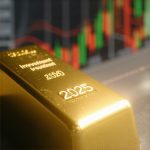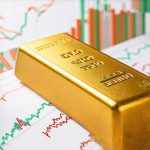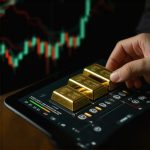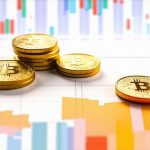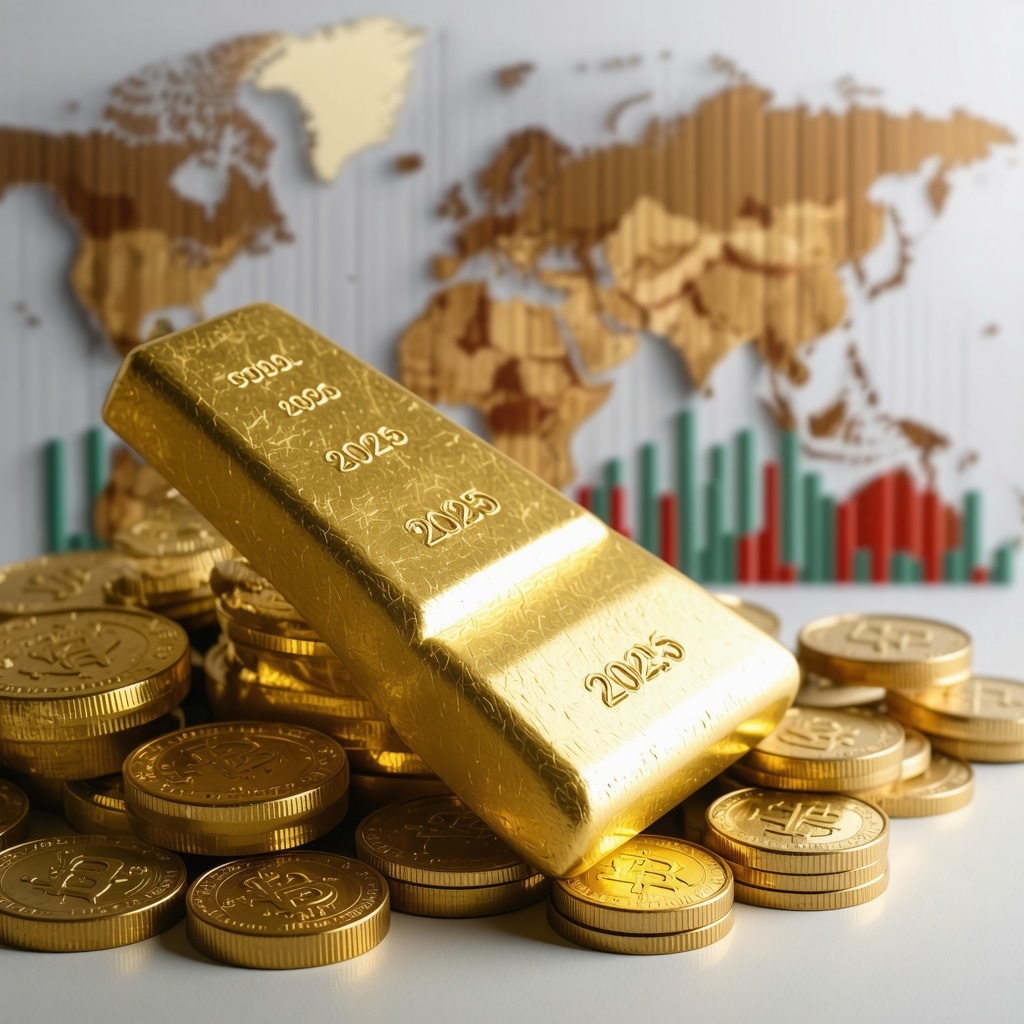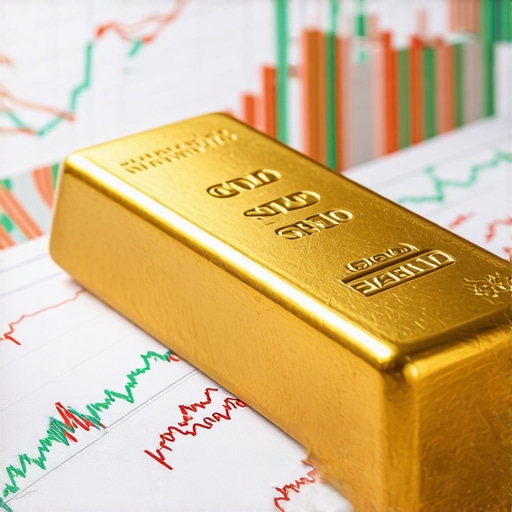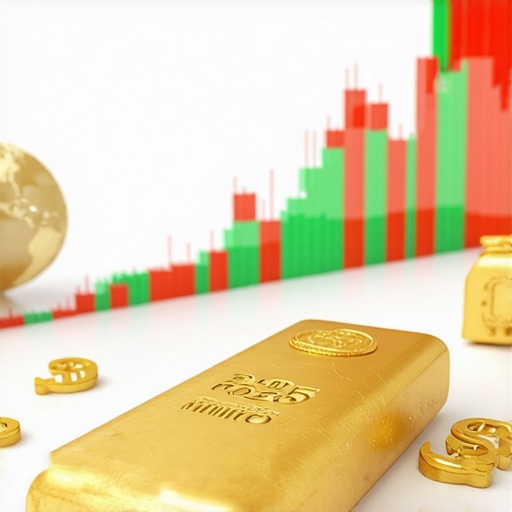Decoding the Complex Tapestry of Global Gold Demand in 2025
As the world navigates through unprecedented economic shifts and geopolitical uncertainties, gold remains a steadfast pillar of wealth preservation and investment intrigue. The year 2025 is shaping up to be pivotal, with global gold demand poised to influence prices significantly. But what are the underlying forces driving this momentum? Understanding these demand trends not only empowers investors but also sharpens strategic forecasting in a market often swayed by nuanced factors.
Unearthing Regional Demand Nuances: Asia’s Ascendancy and Beyond
Asia continues to dominate the gold consumption landscape, with countries like India and China fueling demand through cultural affinity and burgeoning middle-class wealth. India’s wedding season alone accounts for substantial physical gold purchases, while China’s strategic reserves and jewelry market expansions add layers of complexity. Meanwhile, emerging markets in Southeast Asia and the Middle East are exhibiting rising appetite for gold, driven by economic growth and inflation hedging needs. This regional diversification signals a vibrant and multifaceted demand pattern that investors must decipher to anticipate price movements accurately.
How Do Central Bank Gold Purchases Shape Global Market Prices?
Central banks have increasingly turned to gold as a strategic reserve asset, especially amid fluctuating currencies and global financial volatility. Large-scale acquisitions by institutions such as the People’s Bank of China and the Reserve Bank of India act as powerful demand catalysts, often triggering ripple effects across commodity markets. These purchases reflect a broader trend of de-dollarization and diversification, underscoring gold’s enduring role as a safe haven. Insightful analysis of these transactions reveals their profound impact on supply-demand balance and price trajectories in 2025.
The Role of Investment Vehicles: ETFs, Futures, and Physical Gold in Demand Dynamics
Investment demand is evolving beyond traditional physical gold purchases. Gold ETFs have democratized access, allowing a wider investor base to partake in gold market gains without holding the metal physically. Concurrently, futures contracts provide sophisticated tools for hedging and speculation, adding liquidity but also complexity to price discovery. Notably, the interplay between these instruments and physical gold demand creates nuanced market signals; for instance, strong ETF inflows often precede price rallies, while surges in physical gold buying signal foundational strength. Understanding these layers is essential for a holistic view of 2025’s gold demand landscape.
Inflation, Currency Fluctuations, and Technological Influences: The Underestimated Demand Drivers
Persistent inflationary pressures and volatile currency valuations in key economies amplify gold’s attractiveness as an inflation hedge. Moreover, new technological applications in electronics and green energy sectors incrementally boost industrial gold demand, a factor often overshadowed by investment and jewelry consumption. This subtle but steady industrial usage underscores a diversification in demand sources, contributing to price resilience. Investors ignoring these facets risk underestimating the comprehensive demand picture shaping gold’s market value in 2025.
Investing with Insight: Leveraging Demand Trend Analysis for Strategic Advantage
For investors aiming to navigate gold’s complex market, integrating demand trend analysis is paramount. Tools that dissect regional consumption patterns, central bank activities, and investment vehicle flows provide a competitive edge. Those seeking to deepen their understanding can explore detailed methodologies in how to analyze gold demand trends for smarter investment moves. This strategic approach enables timely decision-making aligned with evolving market realities.
Engage with us by sharing your perspectives on gold demand trends or asking questions to refine your investment strategy.
For a comprehensive examination of how gold supply and demand affect pricing mechanisms, the insightful analysis by the World Gold Council offers authoritative guidance: World Gold Council – Gold Demand Trends.
Reflecting on Gold Demand: Personal Investment Lessons from 2025 Trends
Diving deeper into gold demand trends this year, I’ve found it fascinating how the interplay between global economic shifts and individual investor behaviors continues to shape market dynamics. For instance, my own experience with physical gold buying in the Asian markets revealed firsthand the cultural significance that drives demand beyond mere investment logic. Witnessing how festivals and weddings create surges in purchases made me appreciate the less quantifiable, yet powerful, drivers behind gold’s value.
At the same time, I’ve been tracking ETF inflows and futures trading volumes, which often seem abstract but actually provide critical real-time signals. These investment vehicles add a layer of complexity and opportunity, revealing how modern financial instruments can amplify or temper traditional demand. It’s a reminder that staying informed about these evolving facets can be a game changer for those serious about gold investing.
Central Banks and the Invisible Hand: How Official Reserves Influence Your Portfolio
One of the most eye-opening aspects I’ve encountered is the outsized influence central bank gold purchases exert on overall market sentiment. When I reviewed data from the International Monetary Fund and cross-checked with recent reports, it became clear how strategic reserves act as a barometer for geopolitical confidence. For example, countries diversifying their reserves away from fiat currencies signal a collective hedging against instability, buoying gold prices globally.
Understanding this, I now pay particular attention to announcements and trends from major reserve holders like the People’s Bank of China. Their buying patterns often precede broader shifts in price, giving savvy investors a valuable early warning system. This insight helped me adjust my portfolio timing in 2025, reducing risk and capturing gains more effectively.
Have You Considered How Technological Advances Could Shift Gold Demand in Unexpected Ways?
It’s easy to think of gold simply as jewelry or a safe haven asset, but have you ever wondered how emerging technologies might reshape demand? For example, with the rise of electric vehicles and renewable energy, gold’s role in electronics and green tech is quietly expanding. This industrial demand, while smaller compared to investment and jewelry, introduces a subtle but growing force that might surprise many investors.
Exploring this angle led me to the World Gold Council’s detailed research, which offers a compelling analysis of gold’s diversified demand sources. It’s worth a look if you want to grasp the full picture beyond traditional factors.
Practical Tips for Integrating Demand Trends into Your Gold Investment Strategy
From my own trial and error, I’ve learned that blending insights on regional consumption, central bank activities, and investment instruments creates a more nuanced approach. One practical step I recommend is diversifying your gold holdings between physical gold, ETFs, and possibly futures contracts, depending on your risk tolerance and knowledge level. For those interested, the guide on how to analyze gold demand trends for smarter investment moves offers excellent strategies to build this understanding.
Additionally, engaging with reputable dealers and trusted sources helps ensure safe and informed transactions. If you’re curious about selecting trustworthy gold dealers, exploring tips on how to find reliable gold dealers for safe physical gold buys could be a worthwhile next step.
What’s your experience with gold demand trends this year? Have you noticed any surprising shifts or challenges in your investment journey? Feel free to share your stories or questions in the comments below — let’s learn from each other’s insights.
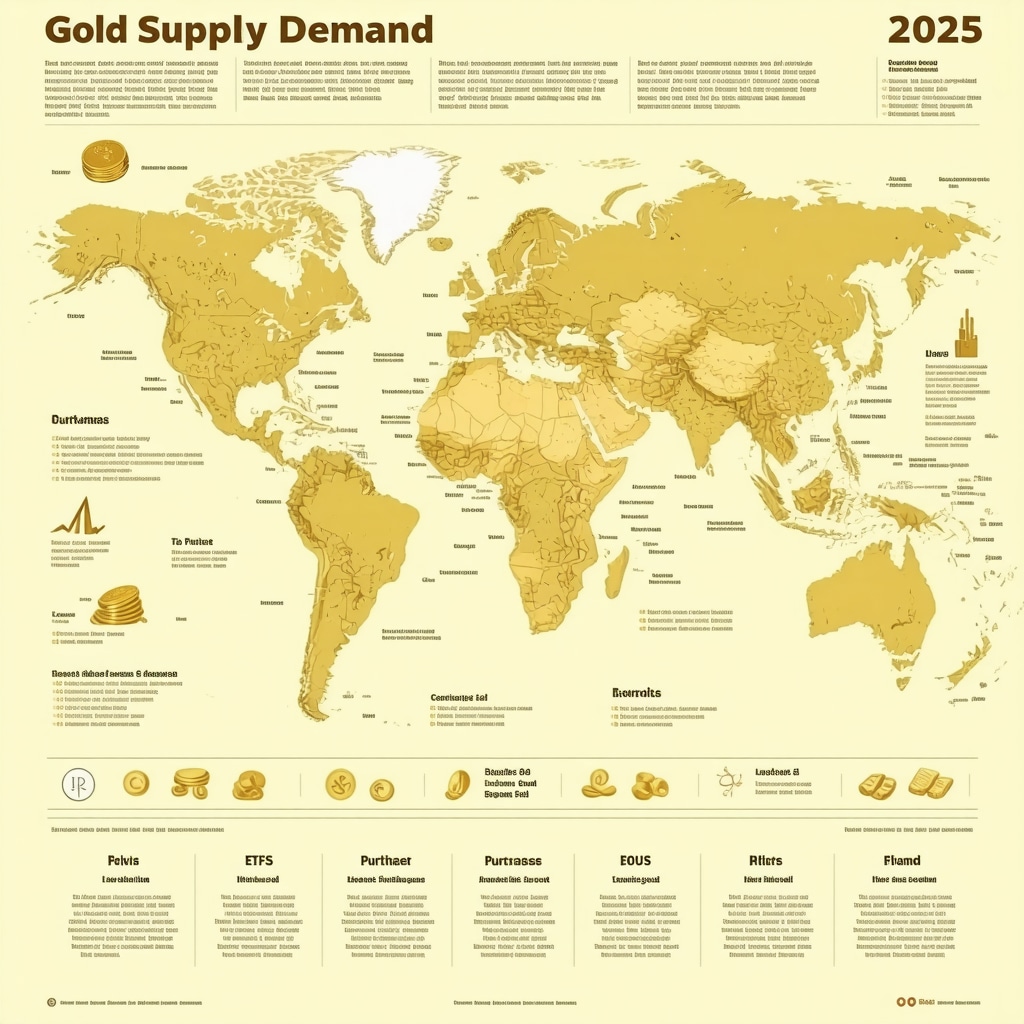
Central Banks as Strategic Market Movers: Beyond Reserve Accumulation
Central banks’ gold acquisition strategies in 2025 are no longer mere portfolio diversifications; they have evolved into powerful geopolitical signals that reverberate across global markets. Unlike traditional reserve accumulation aimed at stabilizing currency reserves, modern central bank purchases often reflect nuanced policy shifts, including de-dollarization efforts and hedging against systemic financial risks. The timing and scale of these purchases can serve as early indicators of macroeconomic stress or confidence, thus informing sophisticated investors’ tactical positioning.
In particular, the interplay between emerging economies and developed nations’ central banks has introduced a dynamic competitive element to gold demand. For example, while the People’s Bank of China has strategically increased its gold reserves to assert economic sovereignty, Western central banks have exhibited cautious rebalancing amid inflationary concerns. This divergence creates asymmetrical supply-demand pressures that sophisticated investors must decode to anticipate price inflection points.
What Advanced Metrics Can Investors Use to Monitor Central Bank Gold Activity Impact?
To effectively gauge the influence of central bank gold purchases on market prices, investors should leverage a combination of real-time import-export data, official reserve disclosures, and sophisticated analytics like net central bank buying rates adjusted for leasing activity. Additionally, monitoring central bank meeting minutes and geopolitical developments enhances the contextual understanding of these moves. The International Monetary Fund’s Data Portal offers granular reserve data crucial for this analysis, while specialized platforms provide sentiment analytics integrating central bank signals.
Technological Evolution: The Quiet Catalyst Expanding Industrial Gold Demand
While investment and jewelry demand dominate headlines, the subtle expansion of gold’s role in cutting-edge technologies is reshaping its industrial demand profile. Innovations in nanoelectronics, medical devices, and sustainable energy solutions increasingly rely on gold’s unparalleled conductivity and corrosion resistance. For instance, the surge in electric vehicle production has escalated demand for gold-based components in sensors and connectors, a trend projected to intensify as renewable energy infrastructure scales globally.
This technological pivot introduces a layer of demand resilience often overlooked by traditional market analyses. Unlike cyclical investment demand, industrial gold applications exhibit a steadily upward trajectory, partially decoupling gold prices from purely financial market stimuli. Consequently, investors should incorporate technological adoption rates and sector-specific growth forecasts into their demand trend models to capture this emerging driver accurately.
Decoding Complex Interactions: How Multi-Faceted Demand Factors Converge to Shape Gold Prices
One of the most challenging aspects of gold market analysis lies in understanding how diverse demand drivers—central banks, investment vehicles, jewelry consumption, and industrial use—interact and amplify or mitigate each other’s effects. For example, during periods of geopolitical tension, central bank buying may coincide with surges in ETF inflows, producing compounded upward pressure on prices. Conversely, if rising industrial demand coincides with currency stabilization, the resultant price movement could be more muted.
Advanced modeling techniques, including Bayesian inference and machine learning algorithms, are increasingly employed by expert analysts to unravel these interdependencies. These approaches enable the synthesis of vast datasets—ranging from trade flows to sentiment indices—yielding probabilistic forecasts that surpass traditional linear models. Such tools are indispensable for investors seeking to anticipate nuanced market shifts in 2025’s volatile environment.
Delve deeper into these multifaceted demand dynamics with our comprehensive resources and elevate your gold investment strategy. Engage with our expert analyses and join the conversation to refine your approach in this complex market landscape.
Central Banks as Strategic Market Movers: Beyond Reserve Accumulation
Central banks’ gold acquisition strategies in 2025 are no longer mere portfolio diversifications; they have evolved into powerful geopolitical signals that reverberate across global markets. Unlike traditional reserve accumulation aimed at stabilizing currency reserves, modern central bank purchases often reflect nuanced policy shifts, including de-dollarization efforts and hedging against systemic financial risks. The timing and scale of these purchases can serve as early indicators of macroeconomic stress or confidence, thus informing sophisticated investors’ tactical positioning.
In particular, the interplay between emerging economies and developed nations’ central banks has introduced a dynamic competitive element to gold demand. For example, while the People’s Bank of China has strategically increased its gold reserves to assert economic sovereignty, Western central banks have exhibited cautious rebalancing amid inflationary concerns. This divergence creates asymmetrical supply-demand pressures that sophisticated investors must decode to anticipate price inflection points.
What Advanced Metrics Can Investors Use to Monitor Central Bank Gold Activity Impact?
To effectively gauge the influence of central bank gold purchases on market prices, investors should leverage a combination of real-time import-export data, official reserve disclosures, and sophisticated analytics like net central bank buying rates adjusted for leasing activity. Additionally, monitoring central bank meeting minutes and geopolitical developments enhances the contextual understanding of these moves. The International Monetary Fund’s Data Portal offers granular reserve data crucial for this analysis, while specialized platforms provide sentiment analytics integrating central bank signals.
Technological Evolution: The Quiet Catalyst Expanding Industrial Gold Demand
While investment and jewelry demand dominate headlines, the subtle expansion of gold’s role in cutting-edge technologies is reshaping its industrial demand profile. Innovations in nanoelectronics, medical devices, and sustainable energy solutions increasingly rely on gold’s unparalleled conductivity and corrosion resistance. For instance, the surge in electric vehicle production has escalated demand for gold-based components in sensors and connectors, a trend projected to intensify as renewable energy infrastructure scales globally.
This technological pivot introduces a layer of demand resilience often overlooked by traditional market analyses. Unlike cyclical investment demand, industrial gold applications exhibit a steadily upward trajectory, partially decoupling gold prices from purely financial market stimuli. Consequently, investors should incorporate technological adoption rates and sector-specific growth forecasts into their demand trend models to capture this emerging driver accurately.
Decoding Complex Interactions: How Multi-Faceted Demand Factors Converge to Shape Gold Prices
One of the most challenging aspects of gold market analysis lies in understanding how diverse demand drivers—central banks, investment vehicles, jewelry consumption, and industrial use—interact and amplify or mitigate each other’s effects. For example, during periods of geopolitical tension, central bank buying may coincide with surges in ETF inflows, producing compounded upward pressure on prices. Conversely, if rising industrial demand coincides with currency stabilization, the resultant price movement could be more muted.
Advanced modeling techniques, including Bayesian inference and machine learning algorithms, are increasingly employed by expert analysts to unravel these interdependencies. These approaches enable the synthesis of vast datasets—ranging from trade flows to sentiment indices—yielding probabilistic forecasts that surpass traditional linear models. Such tools are indispensable for investors seeking to anticipate nuanced market shifts in 2025’s volatile environment.
Delve deeper into these multifaceted demand dynamics with our comprehensive resources and elevate your gold investment strategy. Engage with our expert analyses and join the conversation to refine your approach in this complex market landscape.
Frequently Asked Questions (FAQ)
What are the main factors driving global gold demand in 2025?
Global gold demand in 2025 is primarily influenced by cultural consumption in regions like Asia, strategic central bank purchases, investment vehicles such as ETFs and futures, inflationary pressures, currency volatility, and emerging industrial uses driven by technological advancements. Each factor interacts to shape the overall demand landscape and price dynamics.
How do central bank gold purchases impact gold prices and market sentiment?
Central banks’ gold acquisitions act as strong signals of economic confidence or caution. Large-scale purchases, especially from emerging economies like China and India, often lead to upward price pressure by tightening supply. These moves also reflect geopolitical strategies such as de-dollarization, influencing market sentiment and prompting investor repositioning worldwide.
In what ways do investment vehicles alter the traditional gold demand patterns?
Investment vehicles like gold ETFs and futures have democratized access and increased market liquidity, allowing a broader investor base to participate without owning physical gold. They also add complexity to price discovery, as inflows or outflows in these instruments can precede or amplify price movements, offering early signals of demand shifts beyond physical buying trends.
Why is industrial demand for gold gaining significance, and which technologies are driving this trend?
Industrial demand is growing steadily due to gold’s unique properties such as conductivity and corrosion resistance, essential in nanoelectronics, medical devices, and green energy technologies. The expansion of electric vehicles and renewable energy infrastructure particularly drives demand for gold components, providing a resilient and less cyclical source of consumption.
How can investors incorporate gold demand trend analysis into their investment strategies?
Investors can enhance their strategies by monitoring regional consumption patterns, central bank reserve activities, and flows in investment vehicles. Utilizing advanced analytics and staying informed about technological demand growth helps anticipate price inflections. Diversifying holdings across physical gold, ETFs, and futures according to risk tolerance also optimizes exposure to various demand drivers.
What advanced tools or metrics can be used to track central bank gold activity?
Investors should utilize real-time import-export data, official reserve disclosures from institutions like the IMF, and analytics adjusting for gold leasing and net buying rates. Monitoring central bank meeting minutes and geopolitical developments further contextualizes these moves. Specialized sentiment analysis platforms complement quantitative data to provide a comprehensive view.
How do geopolitical tensions influence gold demand and pricing?
Geopolitical instability often triggers increased demand for gold as a safe haven. Central banks may accelerate gold purchases, and investors tend to flock to ETFs and physical gold, collectively pushing prices higher. Conversely, easing tensions can reduce urgency, softening demand and moderating prices.
Are there risks associated with relying on gold ETFs compared to physical gold?
While gold ETFs offer liquidity and ease of access, they do not provide direct ownership of physical metal, exposing investors to counterparty and market risks. Physical gold offers tangible security but comes with storage and liquidity considerations. A balanced approach considering personal circumstances is advisable.
How do currency fluctuations affect gold demand globally?
Gold is often seen as a hedge against currency depreciation. When major currencies weaken or become volatile, investors and central banks increase gold purchases to preserve value. Conversely, a strong currency can reduce gold’s appeal, impacting demand and prices accordingly.
What role do cultural factors play in shaping gold demand in different regions?
Cultural traditions, such as wedding seasons in India and festivals in China, drive substantial physical gold purchases beyond pure investment motives. These culturally anchored demands create predictable seasonal patterns and influence regional price sensitivities, critical for comprehensive market analysis.
Trusted External Sources
- World Gold Council (WGC) – As the leading authority on gold market research, the WGC provides detailed data on global gold demand trends, investment behavior, and regional consumption patterns, making it indispensable for understanding market fundamentals.
- International Monetary Fund (IMF) Data Portal – Offers granular and up-to-date information on official gold reserves and central bank holdings worldwide, essential for tracking strategic reserve movements influencing prices.
- London Bullion Market Association (LBMA) – Provides critical insights into global gold trading, standards, and market liquidity, facilitating understanding of transaction flows and price discovery mechanisms.
- Bloomberg Commodity and Metals Research – Renowned for its in-depth analysis and real-time data on gold futures, ETFs, and macroeconomic indicators that impact gold demand and pricing dynamics.
- Scientific Journals on Materials Science and Electronics – Publications such as “Advanced Materials” and “IEEE Transactions” provide authoritative information on technological innovations driving industrial gold demand.
Conclusion
Global gold demand in 2025 embodies a complex interplay of cultural, economic, geopolitical, and technological forces. From Asia’s enduring cultural affinity and central bank strategic maneuvers to evolving investment vehicles and expanding industrial applications, each facet contributes uniquely to shaping gold’s market trajectory. Recognizing these multifaceted demand drivers empowers investors and analysts to decode price signals with greater precision and adapt strategies accordingly. Incorporating advanced analytics and staying attuned to emerging trends will be pivotal in navigating gold’s dynamic landscape this year. To deepen your expertise and refine your investment approach, engage with our expert content and join the conversation—your insights and questions enrich the collective understanding of this timeless asset’s evolving role.
